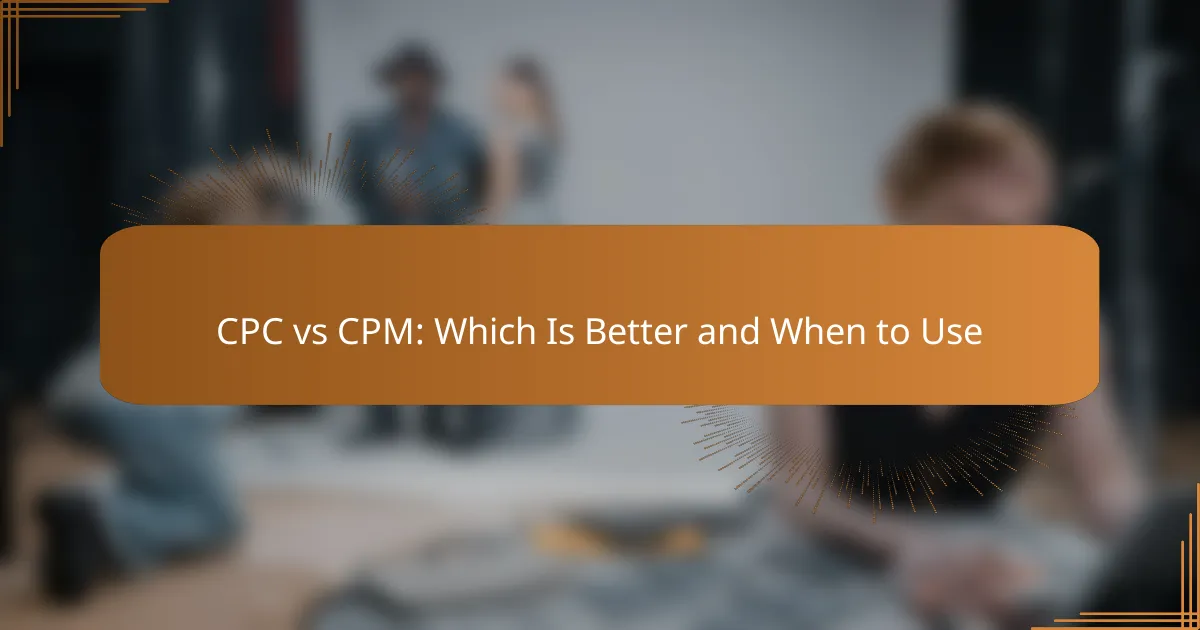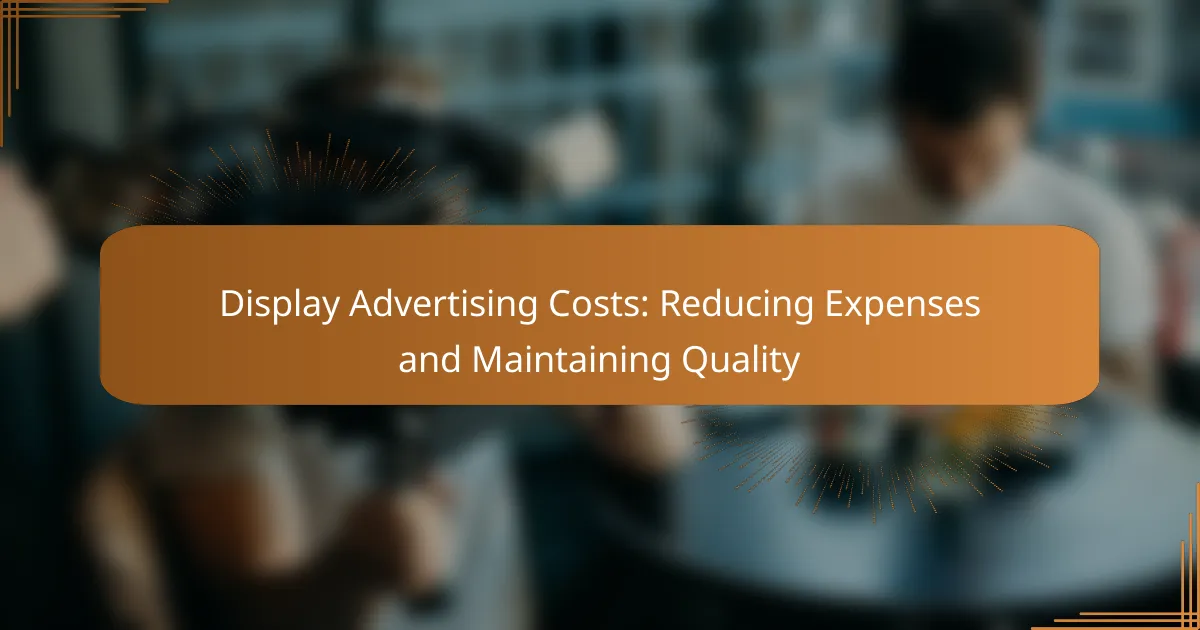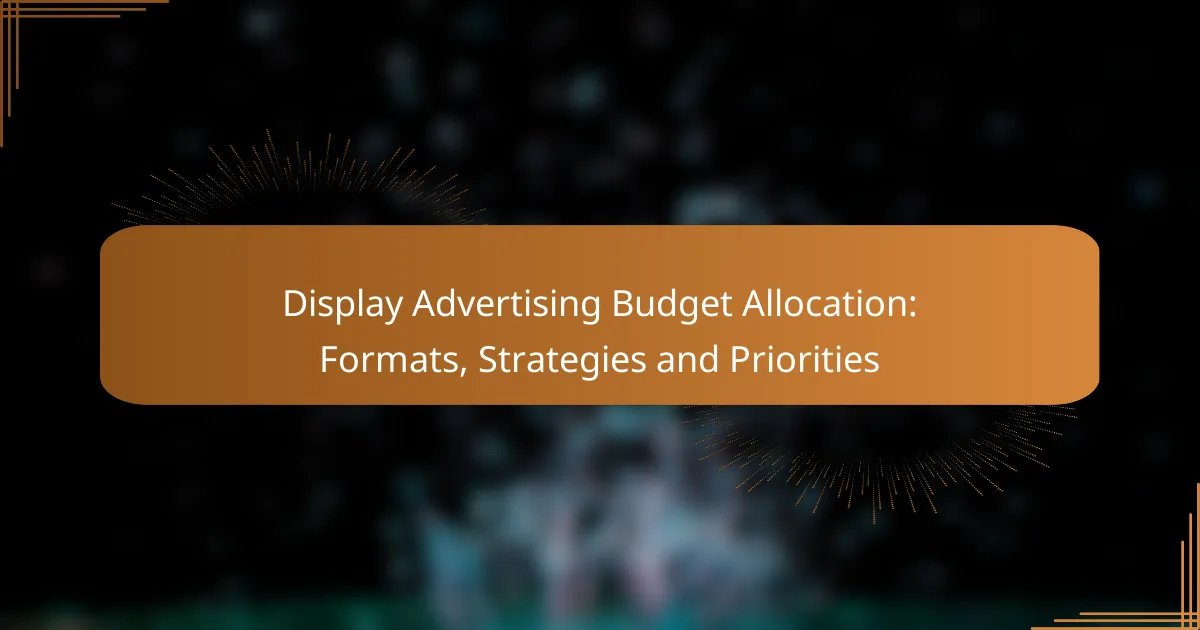CPC (Cost Per Click) and CPM (Cost Per Mille) are two distinct pricing models in display advertising, each serving different objectives. CPC is ideal for driving traffic and conversions, as advertisers pay only for actual clicks on their ads. In contrast, CPM focuses on brand visibility by charging for impressions, making it suitable for campaigns aimed at reaching a wider audience.
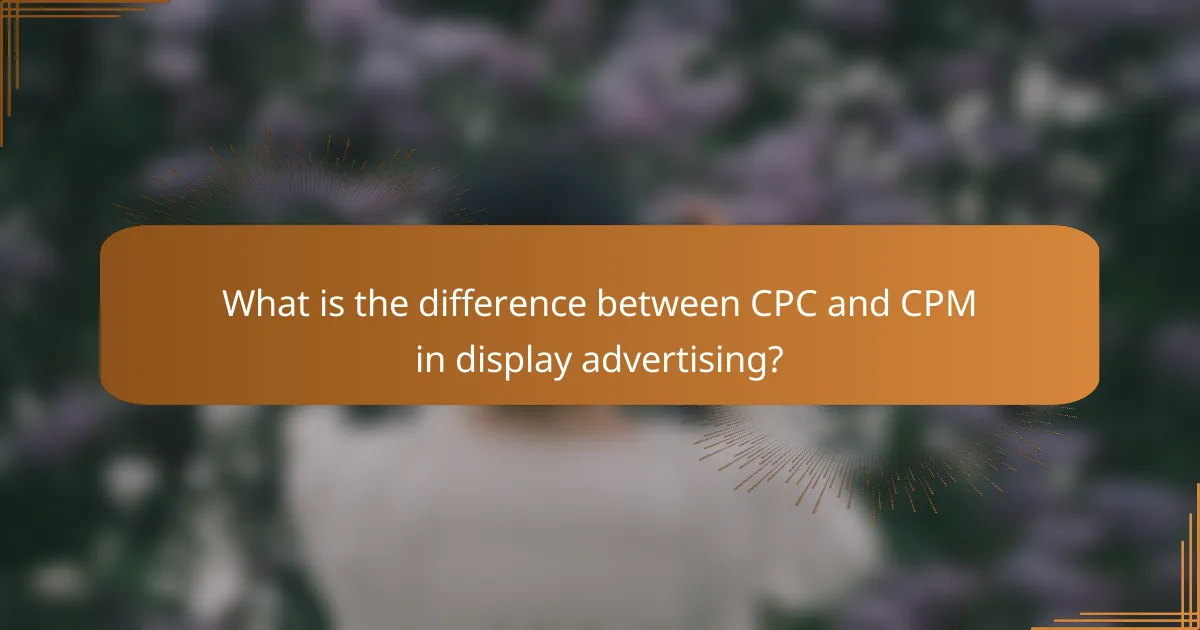
What is the difference between CPC and CPM in display advertising?
CPC (Cost Per Click) and CPM (Cost Per Mille) are two distinct pricing models in display advertising. CPC charges advertisers based on the number of clicks their ads receive, while CPM charges based on the number of impressions, or views, the ads generate.
CPC (Cost Per Click) definition
CPC, or Cost Per Click, is a pricing model where advertisers pay each time a user clicks on their ad. This model is beneficial for campaigns focused on driving traffic to a website, as it directly correlates spending with user engagement. Advertisers often set a maximum bid for how much they are willing to pay per click.
For example, if an advertiser sets a CPC of $1 and receives 100 clicks, their total cost would be $100. This model is ideal for businesses looking to maximize conversions or leads from their advertising efforts.
CPM (Cost Per Mille) definition
CPM, or Cost Per Mille, refers to the cost of 1,000 impressions of an ad. This model is commonly used for brand awareness campaigns where the goal is to reach a large audience rather than drive immediate clicks. Advertisers pay a set fee for every 1,000 times their ad is displayed, regardless of user interaction.
For instance, if an advertiser pays $10 for a CPM campaign and the ad is shown 10,000 times, the total cost would be $100. This approach is effective for building brand visibility and recognition over time.
Key differences between CPC and CPM
The primary difference between CPC and CPM lies in how advertisers are charged. CPC focuses on user engagement by charging for clicks, making it suitable for performance-driven campaigns. In contrast, CPM emphasizes reach, charging for impressions, which is better for brand awareness initiatives.
When choosing between CPC and CPM, consider your campaign objectives. If your goal is to generate traffic or conversions, CPC may be more effective. However, if you aim to increase brand visibility among a wider audience, CPM could be the better option. Additionally, monitor the performance metrics closely to adjust your strategy based on what yields the best results.

When should you use CPC in your campaigns?
CPC, or cost-per-click, is best used when your primary goal is to drive traffic to your website. This model is effective for campaigns focused on conversions, where you want to pay only when someone clicks on your ad, making it a cost-efficient option for generating leads or sales.
Best scenarios for CPC usage
CPC is ideal for campaigns where immediate user action is desired, such as e-commerce promotions or lead generation. If your goal is to increase website visits or drive specific actions, like signing up for a newsletter, CPC can be a more effective strategy than CPM (cost-per-thousand impressions).
Consider using CPC when you have a well-defined target audience and a compelling call-to-action. This approach allows you to optimize your ad spend by focusing on clicks that lead to meaningful interactions with your brand.
Target audience considerations for CPC
Understanding your target audience is crucial when using CPC. If your audience is highly engaged and likely to click on ads, CPC can yield better results. Tailor your ads to resonate with their interests and needs to maximize click-through rates.
Additionally, consider the platforms where your audience spends their time. For instance, if your target demographic is active on social media, CPC campaigns on those platforms can effectively drive traffic. Always analyze audience behavior and preferences to refine your CPC strategy and improve performance.

When should you use CPM in your campaigns?
CPM, or cost per thousand impressions, is best used when brand visibility and awareness are your primary goals. It is particularly effective for campaigns aiming to reach a broad audience rather than focusing on immediate conversions.
Best scenarios for CPM usage
CPM is ideal for campaigns that prioritize exposure, such as product launches or brand awareness initiatives. If your goal is to get your message in front of as many eyes as possible, CPM can be a cost-effective choice.
Consider using CPM for display advertising on high-traffic websites where the likelihood of impressions is high. This approach is beneficial when you want to build familiarity with your brand among potential customers.
Target audience considerations for CPM
When using CPM, it’s crucial to understand your target audience’s characteristics and behaviors. If your audience is large and diverse, CPM can help you reach a wider demographic effectively.
However, if your target market is niche or highly specific, consider whether CPM will yield the desired engagement. In such cases, alternative pricing models like CPC (cost per click) may be more suitable to ensure that your budget is spent on more targeted interactions.

How do CPC and CPM impact your advertising budget?
CPC (Cost Per Click) and CPM (Cost Per Mille) significantly influence how you allocate your advertising budget. CPC charges you for each click on your ad, while CPM charges you for every thousand impressions, making them suitable for different marketing goals.
Budgeting for CPC campaigns
When budgeting for CPC campaigns, focus on your target cost per click and expected conversion rates. Typically, businesses may allocate anywhere from a few dollars to several tens of dollars per click, depending on the industry and competition.
To optimize your budget, monitor the performance of your ads regularly. Adjust bids based on which keywords or ads yield the highest return on investment (ROI). Avoid overspending by setting daily or monthly limits to control costs.
Budgeting for CPM campaigns
For CPM campaigns, your budget should be based on the total number of impressions you wish to achieve. Rates can vary widely, often ranging from a few euros to several dozen euros per thousand impressions, depending on the platform and audience targeting.
Consider your brand awareness goals when budgeting for CPM. This model is effective for campaigns aimed at reaching a broad audience rather than driving immediate clicks. Track engagement metrics to ensure your budget is effectively generating visibility and brand recognition.

What are the advantages of using CPC over CPM?
CPC, or cost per click, offers distinct advantages over CPM, or cost per thousand impressions, primarily by focusing on user engagement. Advertisers only pay when a user clicks on their ad, making it a more performance-driven approach that can lead to better ROI.
Higher engagement potential with CPC
CPC campaigns tend to generate higher engagement because they encourage users to take action by clicking on ads. This model is particularly effective for businesses looking to drive traffic to their websites or landing pages, as it aligns costs directly with user interest.
For example, if a company spends $100 on a CPC campaign with an average cost of $1 per click, they can expect around 100 clicks, potentially leading to conversions. This direct correlation between spending and user interaction makes CPC a preferred choice for many advertisers.
Performance tracking benefits of CPC
CPC provides clear metrics for performance tracking, allowing advertisers to analyze the effectiveness of their campaigns in real-time. By monitoring click-through rates (CTR) and conversion rates, businesses can quickly identify which ads are performing well and which need adjustment.
Additionally, CPC campaigns often allow for A/B testing, enabling advertisers to experiment with different ad creatives or targeting strategies. This flexibility helps optimize campaigns for better results, making it easier to allocate budgets effectively and maximize returns.
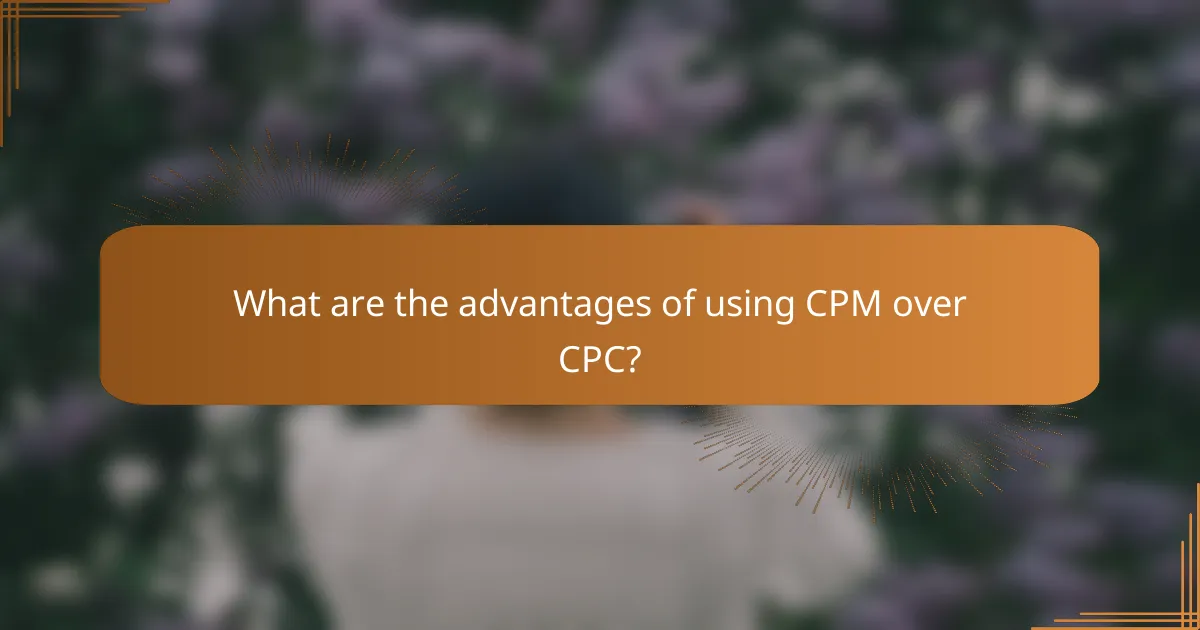
What are the advantages of using CPM over CPC?
CPM, or cost per thousand impressions, offers several advantages over CPC, or cost per click, particularly in terms of brand exposure and cost efficiency for large campaigns. Advertisers can benefit from increased visibility and a more predictable budgeting approach when using CPM.
Brand visibility benefits of CPM
One of the primary advantages of CPM is its ability to enhance brand visibility. Since advertisers pay for impressions rather than clicks, their ads are displayed more frequently, leading to greater exposure among potential customers. This is particularly beneficial for brands looking to build awareness rather than drive immediate clicks.
For example, a brand launching a new product may prefer CPM to ensure that their ads reach a wide audience multiple times, reinforcing their message. This repeated exposure can significantly improve brand recall and recognition over time.
Cost efficiency in large campaigns with CPM
CPM can be more cost-effective for large-scale advertising campaigns. When targeting a broad audience, the cost per impression often decreases, allowing advertisers to maximize their reach without significantly increasing their budget. This is especially true in competitive markets where CPC rates can escalate quickly.
For instance, a company running a national campaign might find that using CPM allows them to secure a larger share of impressions at a lower overall cost compared to a CPC model, where they would pay for each click regardless of the total impressions served.
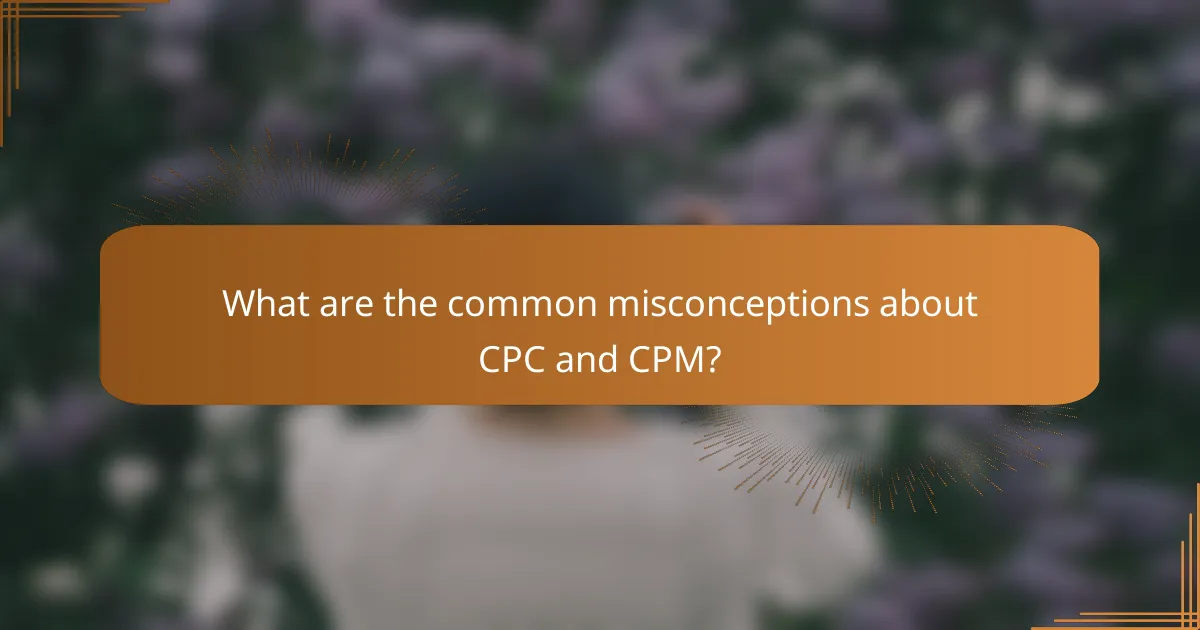
What are the common misconceptions about CPC and CPM?
Many advertisers hold misconceptions about CPC (Cost Per Click) and CPM (Cost Per Mille) that can lead to inefficient ad spending. Understanding these misconceptions is crucial for optimizing ad campaigns and making informed budget decisions.
Misunderstanding CPC as always more expensive
A common belief is that CPC is inherently more costly than CPM. While CPC can lead to higher costs per action, it often provides better targeting and engagement, which can justify the expense. Advertisers should evaluate the specific goals of their campaigns to determine the most cost-effective strategy.
For example, if the objective is to drive traffic to a website, CPC may yield better returns despite higher costs. In contrast, if brand awareness is the goal, CPM could be a more economical choice, especially for campaigns with broad reach.
Misunderstanding CPM as ineffective for small budgets
Another misconception is that CPM is unsuitable for advertisers with limited budgets. In reality, CPM can be a viable option for small budgets, allowing advertisers to gain visibility without the need for high click-through rates. This model can be particularly effective for campaigns aimed at building brand recognition.
Advertisers with smaller budgets can still leverage CPM by focusing on platforms that offer competitive rates and targeting options. Setting a clear budget and monitoring performance can help maximize the effectiveness of CPM campaigns, even with limited funds.
